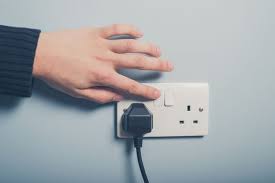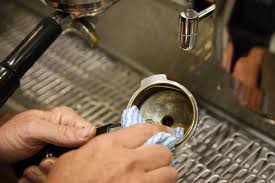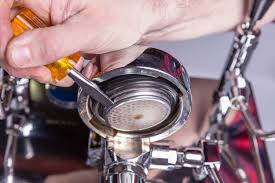How to Clean an Espresso Machine for Beginners.
What dangers lurk if you don’t clean your Espresso Machine?
Failing to clean your espresso machine regularly can lead to several potential dangers and negative consequences:
- Flavour Contamination: Residual coffee oils, grounds, and minerals can accumulate in the various components of the machine over time. This buildup can result in off-flavours, bitterness, and a decrease in the quality of your espresso shots.
- Bacterial Growth: The warm, moist environment inside an espresso machine can promote the growth of mould, bacteria, and other microorganisms. These can contaminate your coffee, potentially causing health issues if consume.
- Clogging and Reduced Performance: Coffee grounds and mineral deposits can accumulate in the machine’s filters, group heads, and steam wands. This can lead to clogging, reduced water flow, and decreased performance, affecting the extraction process and the overall quality of your espresso.
- Pressure Issues: Accumulated debris can interfere with the pressure and water flow in the machine. This can result in uneven extraction, under-extraction, or over-extraction of coffee, leading to inconsistent taste and poor crema formation.
- Equipment Damage: Mineral buildup, particularly from hard water, can damage internal components of the machine such as valves, pumps, and boilers. This can lead to costly repairs and a shorter lifespan for your espresso machine.
- Health and Safety Concerns: Dirty steam wands and other components that come into contact with milk can harbour bacteria and contaminants. Improper cleaning can lead to the transmission of harmful microorganisms, affecting the health and safety of those who consume the beverages.
- Fire Risk: If coffee oils and grounds accumulate in hard-to-reach places, they can become overheated and potentially catch fire when the machine is in use. This is a rare occurrence but underscores the importance of proper cleaning and maintenance.
- Inconsistent Espresso Quality: The lack of routine cleaning can lead to inconsistencies in espresso quality. Variables such as extraction time, temperature, and pressure can all be affected by dirty components, resulting in espresso shots that vary in taste and appearance.
To mitigate these dangers and maintain the quality and safety of your espresso machine, it’s essential to follow a regular cleaning and maintenance routine. This includes daily tasks like purging steam wands, backflushing the group heads, and wiping down surfaces, as well as periodic tasks like descaling to remove mineral deposits. Always refer to your espresso machine’s manufacturer guidelines for specific cleaning recommendations tailored to your model.
How to Cleaning an Espresso Machine for Beginners.
The exact number of steps for how to clean an espresso machine may vary depending on the specific model and manufacturer’s instructions. However, here are some general steps that are typically involved in cleaning an espresso machine:
- Turn off the machine and unplug it from the power source.
- Remove the portafilter and clean it with hot water, wiping away any remaining coffee residue with a clean towel.
- Use a brush or toothbrush to scrub the group head and gasket, removing any buildup or debris.
- Use a cleaning solution recommended by the manufacturer to clean the inside of the machine. This may involve running the machine with the cleaning solution and then flushing it out with water.
- Clean the steam wand by wiping it with a damp cloth and using a steam wand cleaner to remove any milk residue.
- Wipe down the exterior of the machine with a damp cloth.

Again, the specific steps and instructions on how to clean an espresso machine may vary depending on the espresso machine’s make and model, so it’s important to consult the manufacturer’s instructions or a professional technician for guidance.
Step 1: Turn Off and Cool Down Your Espresso Machine

Before you start cleaning your espresso machine, make sure it is turned off and has had time to cool down. This will prevent any accidents and ensure that you can safely clean the machine without getting burned.
Step 2: Remove and Clean the Portafilter and Basket.

The portafilter and basket are the parts of the espresso machine that come into direct contact with the coffee grounds. To clean them, remove the portafilter and basket from the machine and rinse them under hot water. You can also use a soft-bristled brush to remove any stubborn residue.
Step 3: Clean the Shower Screen.
The shower screen is located inside the group head and is responsible for distributing the water evenly over the coffee grounds. To clean it, use a soft-bristled brush or a clean cloth to remove any coffee residue or oils.
Step 4: Backflush the Espresso Machine.
Backflushing is a process that involves running water and cleaning solution through the espresso machine’s group head and portafilter. This helps to remove any remaining coffee oils and residue from the machine’s internal components.
To backflush your espresso machine, you will need a blind filter and a cleaning solution designed specifically for espresso machines. Follow the instructions on the cleaning solution to mix it with water, then insert the blind filter into the portafilter and add the cleaning solution.
Place the portafilter back into the group head and activate the pump for 10-15 seconds, then turn off the machine and let it sit for another 10-15 seconds. Repeat this process two to three times, then run plain water through the machine to rinse it.
Step 5: Wipe Down the Exterior.

Finally, use a damp cloth to wipe down the exterior of the espresso machine, including the steam wand, drip tray and around the machine.
Keep your Machine Clean.
Using a coffee machine mat can help keep the area around the coffee machine clean in a few ways:
- Spill Prevention: A coffee machine mat provides a barrier between the coffee machine and the surrounding surface, preventing coffee spills from reaching the countertop or other surfaces. This can help avoid stains, damage, or potential slip hazards.
- Easy to Clean: A coffee machine mat is typically made of materials that are easy to clean, such as rubber or silicone. If coffee or other liquids spill onto the mat, it can be easily wiped clean or rinsed with water, which saves time and effort.
- Hygiene: A coffee machine mat can also help improve hygiene by preventing the growth of bacteria or mould on the surface. The mat can be regularly wiped down or cleaned to prevent the buildup of coffee or other debris, which could harbour harmful microorganisms.
- Aesthetics: A coffee machine mat can add a decorative touch to the area around the coffee machine, while also protecting the surface from scratches or other damage.
Overall, using a coffee machine mat is a simple and effective way to keep the area around the coffee machine clean and tidy, while also improving hygiene and minimizing the risk of spills or damage.
Author.
Brendon McAliece is a multi-lingual expat who brings over three decades of flight simulator/PC building experience as well as over two decades of real-world jet fighter experience as a weapons/egress technician. He holds a sport pilot certificate giving him real-world flying experience. Hi travels have taken him from Europe to the Middle East, Asia and his home of Australia. He has a passion for travel, languages, Flight simulation as well as Guitaring and Coffee. You can read more in his blogs below.

Learn more @
DreamingGuitar.com – DreamingCoffee.com – LetsFlyVFR.com
Home – Blog – Shop – About
As an Amazon affiliate I may earn on qualifying sales.





